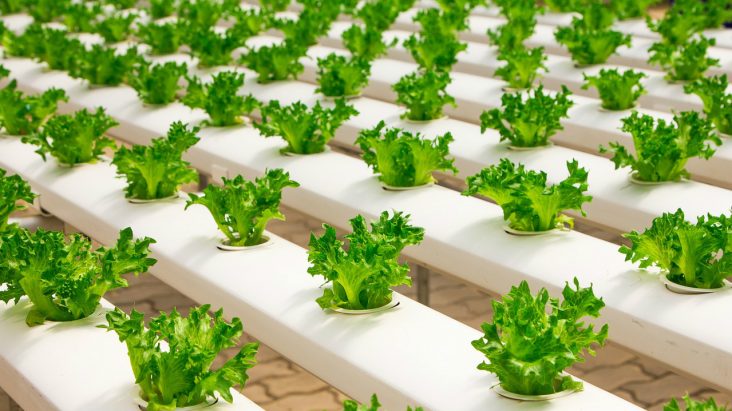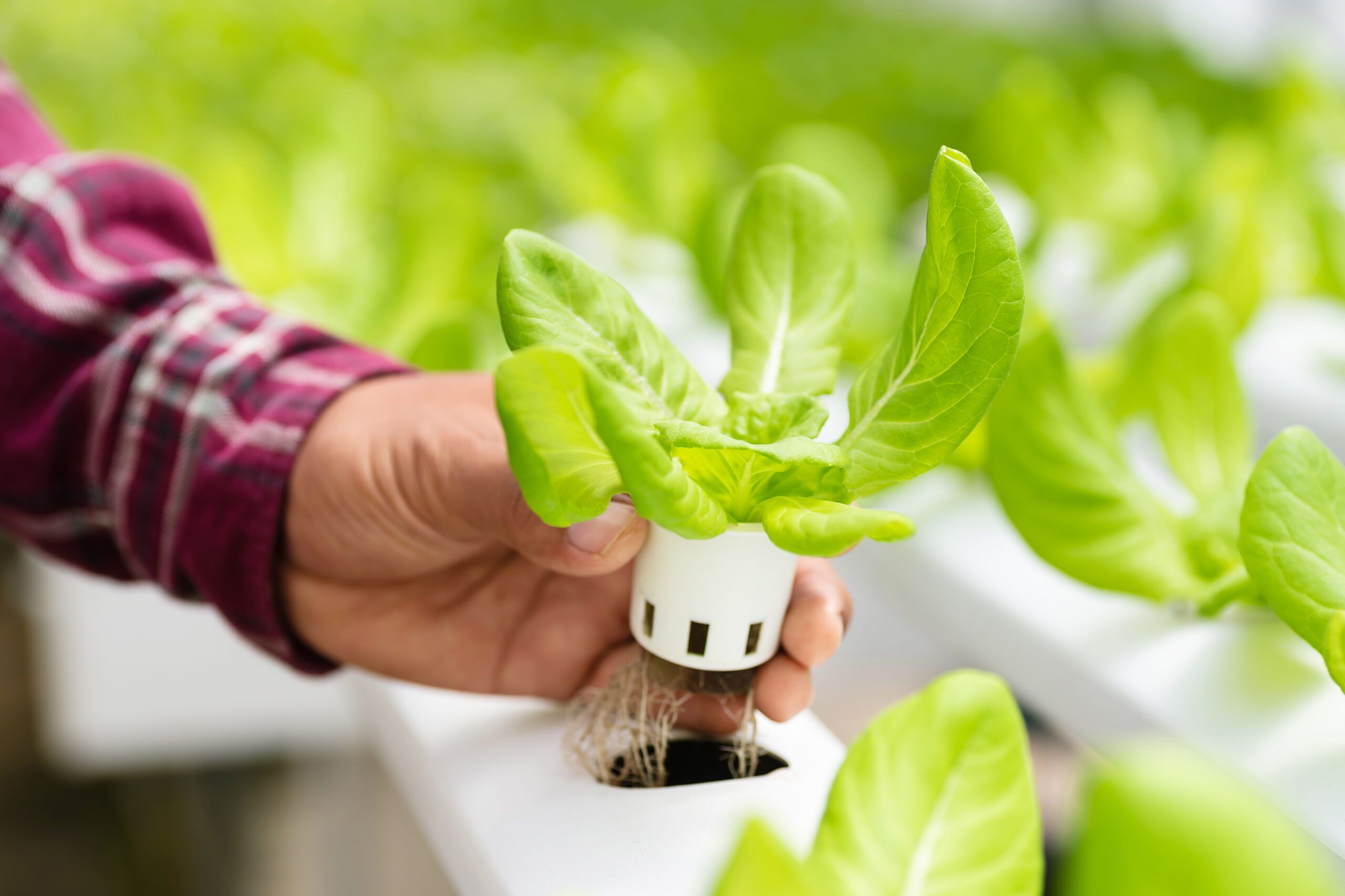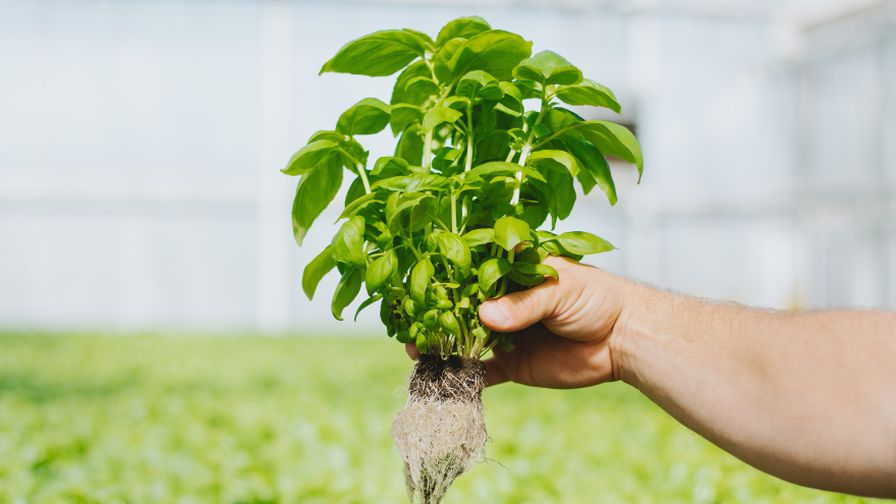Definition and Benefits of Hydroponic Agriculture
Hydroponic agriculture is a method of growing plants without soil, where the roots are submerged in a nutrient-rich water solution. As a professional in the field, I have witnessed the numerous benefits that this innovative technique offers.
Firstly, hydroponic agriculture allows for optimal plant growth and yields. By providing plants with the exact nutrients they need, growers can ensure that their crops receive the ideal conditions for healthy development. This precise control over nutrient intake also minimizes the risk of pests and diseases, resulting in healthier plants.
Additionally, hydroponic systems require less water compared to traditional soil-based farming. The water used in these systems is recirculated, reducing overall water consumption and making hydroponics a more sustainable option.
Furthermore, hydroponic agriculture enables year-round cultivation. By creating an indoor or greenhouse environment, growers can control temperature, light, and humidity levels, allowing for continuous production regardless of external weather conditions.
Lastly, hydroponics offers the potential for higher crop density. With plants grown vertically or in stacked layers, growers can maximize space utilization and increase overall productivity.
In conclusion, hydroponic agriculture provides a sustainable and efficient method of growing plants. Its ability to optimize plant growth, conserve water, enable year-round cultivation, and increase crop density makes it an attractive choice for modern farmers seeking to maximize their yields while minimizing environmental impact.

Types of Hydroponic Systems
Overview of Different Hydroponic Systems
In my experience as a hydroponic farmer, I have come across various types of hydroponic systems that offer unique advantages and suit different growing environments. Here are some of the most popular ones:
- Nutrient Film Technique (NFT): This system involves a thin film of nutrient-rich water flowing over the roots of the plants, providing them with a constant supply of nutrients.
- Drip System: In this system, nutrient solution is dripped onto the base of each plant, either directly onto the roots or onto a growing medium like perlite or rockwool.
- Aeroponics: This system suspends the plant roots in air and mists them with a nutrient solution. It allows for maximum oxygenation and nutrient absorption.
- Deep Water Culture (DWC): In DWC, plants are suspended in a nutrient solution with their roots submerged. Oxygen is provided through an air pump or air stones.
- Vertical Farming: This system utilizes vertical space to grow crops in stacked layers, maximizing production in limited areas.
Each system has its own set of pros and cons, and the choice depends on factors such as space availability, crop type, and personal preferences. Experimenting with different systems can help you find the most suitable one for your hydroponic farming needs.

Choosing the Right Hydroponic System
Factors to Consider When Selecting a Hydroponic System
When it comes to hydroponic agriculture, selecting the right system is crucial for success. As a professional in the field, I have found that there are several factors to consider when choosing a hydroponic system.
- Space: Evaluate the available space you have for your hydroponic setup. Consider the size and layout of your growing area to determine which system will fit best.
- Budget: Determine your budget for the hydroponic system, including equipment, supplies, and ongoing maintenance costs. Different systems have varying price points, so it's important to find one that aligns with your financial resources.
- Crop type: Consider the specific crops you plan to grow. Different plants have different requirements in terms of nutrient levels, pH levels, and lighting. Choose a system that can accommodate the needs of your chosen crops.
- Experience level: Assess your level of experience with hydroponics. Some systems are more beginner-friendly, while others require more advanced knowledge and skill. Select a system that matches your expertise to ensure successful cultivation.
- Water and nutrient management: Evaluate the ease of water and nutrient management in each system. Look for systems that offer efficient and effective ways to deliver nutrients to your plants while minimizing waste.
By considering these factors, you can make an informed decision and choose the right hydroponic system for your agricultural needs. Remember, selecting the right system is an investment in the success of your hydroponic venture.

Nutrient Solutions in Hydroponic Agriculture
Importance of Nutrient Solutions and How to Prepare Them
In hydroponic agriculture, nutrient solutions play a crucial role in providing plants with the necessary minerals and elements for growth. As a hydroponic farmer, I understand the importance of these solutions and how to prepare them effectively.
Nutrient solutions are formulated to meet the specific needs of each plant species. They contain a balanced mix of essential nutrients, such as nitrogen, phosphorus, potassium, calcium, and magnesium. These nutrients are dissolved in water and delivered directly to the plant's root system.
To prepare a nutrient solution, it is essential to follow a recipe or formula that specifies the required concentration of each nutrient. This ensures that plants receive the right amount of nutrients without causing deficiencies or toxicities.
The preparation process involves measuring and mixing the necessary fertilizers or nutrient concentrates with water. It is important to maintain the pH level within the optimal range for nutrient uptake by plants.
Regular monitoring of the nutrient solution's pH and electrical conductivity (EC) is crucial to ensure that plants receive an optimal balance of nutrients. Adjustments may be necessary based on plant growth stage and environmental conditions.
By providing plants with well-prepared nutrient solutions, hydroponic farmers can maximize yields, promote healthy growth, and minimize the risk of nutrient deficiencies or imbalances. This precise control over plant nutrition is one of the key advantages of hydroponic agriculture.
Overall, understanding the importance of nutrient solutions and how to prepare them correctly is essential for successful hydroponic farming. With proper care and attention to detail, hydroponic farmers can achieve impressive results in terms of crop quality and productivity.

Growing Mediums in Hydroponic Agriculture
Types of Substrates Used in Hydroponic Systems
In hydroponic agriculture, the choice of growing medium is crucial for the success of your crops. As a hydroponic farmer, I have experimented with various substrates and found that each has its own advantages and disadvantages.
- Coco Coir: Made from the fibrous husk of coconuts, coco coir is a popular choice due to its excellent water retention and aeration properties. It provides a stable environment for root development and is reusable.
- Rockwool: Made from molten rock spun into fibers, rockwool is widely used in hydroponics. It retains moisture well and provides good drainage. However, it requires careful pH management and can be challenging to dispose of.
- Perlite: Perlite is a lightweight volcanic rock that is heat-treated to expand into small white particles. It has excellent drainage properties and helps prevent overwatering. However, it does not retain water well and may require more frequent watering.
- Vermiculite: Vermiculite is a mineral that expands when heated, forming a lightweight and absorbent substrate. It retains moisture well but can compact over time, reducing aeration.
- Hydroton (Expanded Clay pebbles): These clay pebbles are lightweight and provide good drainage and aeration. They are pH neutral and reusable, making them a popular choice among hydroponic growers.
When choosing a growing medium for your hydroponic system, consider factors such as water retention, aeration, pH stability, and ease of use. Experimentation and observation will help you determine the best substrate for your specific crops and growing conditions.

Essential Nutrients for Hydroponic Plants
Understanding the Nutritional Needs of Hydroponic Crops
In hydroponic agriculture, where plants are grown without soil, it is crucial to understand the nutritional needs of the crops. As a hydroponic farmer, I have learned that providing the right balance of essential nutrients is vital for the plants' growth and development.
Unlike traditional soil-based farming, hydroponic systems rely on nutrient solutions to deliver the necessary elements directly to the plant roots. These solutions typically contain a mix of macronutrients, such as nitrogen, phosphorus, and potassium, as well as micronutrients like iron, manganese, and zinc.
Maintaining optimal nutrient levels is essential to ensure healthy plant growth and maximize yields. Monitoring the pH level of the nutrient solution is also crucial as it affects nutrient availability to the plants.
Additionally, hydroponic farmers need to be aware of potential nutrient deficiencies or imbalances that can arise in their crops. Regular testing and adjustments are necessary to address any issues promptly.
By understanding and meeting the nutritional needs of hydroponic crops, farmers can achieve higher productivity and healthier plants. This knowledge allows us to optimize our growing systems and provide the best conditions for our plants to thrive.

Pest and Disease Management in Hydroponic Agriculture
Methods to Prevent and Control Pests and Diseases in Hydroponic Systems
In hydroponic agriculture, maintaining a healthy and pest-free environment is crucial for the success of your crops. As a hydroponic farmer, I have learned effective methods to prevent and control pests and diseases in my hydroponic systems.
- Implement Proper Sanitation: Regularly clean and disinfect your hydroponic equipment, including trays, reservoirs, and tools. This helps eliminate any potential breeding grounds for pests and diseases.
- Monitor and Identify: Regularly inspect your plants for any signs of pests or diseases. Early detection is key to preventing their spread. Use magnifying glasses or sticky traps to identify common pests like aphids, spider mites, or whiteflies.
- Biological Controls: Introduce beneficial insects like ladybugs or predatory mites to control pests naturally. These insects feed on harmful pests, reducing their population without the need for chemical pesticides.
- Integrated Pest Management (IPM): Implement an IPM strategy that combines various pest control methods. This includes using organic pesticides as a last resort and rotating different control methods to prevent pests from developing resistance.
- Crop Rotation: Rotate your crops regularly to disrupt pest life cycles. This helps reduce the risk of recurring pest infestations.
- Proper Nutrient Management: Maintain a balanced nutrient solution to ensure plant health and resilience against diseases. Proper nutrition strengthens plants' immune systems, making them less susceptible to infections.
By implementing these methods, I have been able to effectively manage pests and diseases in my hydroponic systems, resulting in healthier crops and higher yields. Remember that prevention is key, so regularly monitor and maintain a clean growing environment to keep your plants thriving.

Harvesting and Yield Optimization in Hydroponic Agriculture
Tips for Maximizing Crop Yield and Ensuring Proper Harvesting
When it comes to hydroponic agriculture, maximizing crop yield and ensuring proper harvesting are essential for success. As a hydroponic farmer, I have learned a few tips that can help you optimize your yields and harvest your crops effectively.
- Monitor Nutrient Levels: Regularly check and adjust the nutrient levels in your hydroponic system. Maintaining the right balance of nutrients is crucial for healthy plant growth and maximum yield.
- Control Lighting: Ensure that your plants receive the right amount of light for each growth stage. Adjust the lighting intensity and duration accordingly to promote optimal growth and yield.
- Prune and Train: Regularly prune your plants to remove dead or damaged leaves and branches. Additionally, train your plants by gently bending or tying them to support structures. This helps to improve air circulation, light penetration, and overall plant health.
- Harvest at the Right Time: Each crop has its own ideal harvest time. Monitor your plants closely to determine when they are ready for harvest. Harvesting too early or too late can affect the quality and yield of your crops.
- Handle with Care: When harvesting, handle your crops gently to avoid damaging them. Use clean tools and containers to prevent contamination.
By following these tips, you can optimize your crop yield and ensure a successful harvest in your hydroponic farm. Remember, attention to detail and regular monitoring are key to achieving the best results in hydroponic agriculture.

Future Trends in Hydroponic Agriculture
Innovations and Advancements in Hydroponic Farming Methods
As a professional in the field of agriculture, I am excited to share with you some of the future trends and advancements in hydroponic agriculture. Hydroponics, the practice of growing plants without soil, has gained significant popularity in recent years due to its numerous benefits. Here are some key innovations that are shaping the future of hydroponic farming:
- Vertical Farming: With limited land availability, vertical farming is becoming increasingly popular. This method involves growing plants in vertically stacked layers, maximizing space utilization and increasing crop yields.
- Smart Technology: The integration of smart technology is revolutionizing hydroponic farming. Sensors and automation systems monitor and control factors such as temperature, humidity, nutrient levels, and lighting, optimizing plant growth and reducing resource wastage.
- LED Lighting: LED lights are replacing traditional lighting systems in hydroponic farms. LED lights provide specific wavelengths of light that promote better plant growth while consuming less energy.
- Nutrient Film Technique (NFT): NFT is a popular hydroponic system that uses a thin film of nutrient-rich water flowing over the roots of plants. This technique ensures efficient nutrient uptake and minimizes water usage.
- Hybrid Systems: Combining hydroponics with other agricultural techniques, such as aquaponics (integrating fish farming with hydroponics), creates sustainable and efficient farming systems.
These innovations and advancements in hydroponic farming methods are paving the way for a more sustainable and productive future in agriculture. By embracing these trends, farmers can maximize crop yields, conserve resources, and contribute to a greener planet.

Conclusion
Summary of the Benefits and Potential of Hydroponic Agriculture
In conclusion, hydroponic agriculture offers numerous benefits and has great potential for the future of farming.
Firstly, hydroponics allows for the efficient use of resources such as water and nutrients. With this method, plants are grown in a controlled environment without soil, reducing water consumption by up to 90% compared to traditional farming methods. Additionally, the precise nutrient delivery system ensures that plants receive the exact amount of nutrients they need, resulting in healthier and more productive crops.
Secondly, hydroponics enables year-round cultivation, regardless of climate or location. By providing optimal growing conditions indoors or in greenhouses, farmers can grow crops consistently throughout the year, increasing overall production and reducing dependence on seasonal variations.
Furthermore, hydroponics eliminates the need for pesticides and herbicides since pests and weeds are less likely to thrive in a controlled environment. This makes hydroponic produce healthier and safer for consumers.
Overall, hydroponic agriculture offers a sustainable and efficient solution to food production. By embracing this innovative method, we can address the challenges of limited resources, climate change, and food security while providing fresh and nutritious produce for a growing population.
- Florida Technical College - Grow Tent Hydroponic Window Floor Tray for Indoor Plant Growing
- Link
- Description: This page from Florida Technical College discusses a 48"x24"x60" grow tent that blocks all light from escaping and is lined with 98%-reflective mylar to boost the output efficiency of any grow tent setup.
- ASA College: Florida - Indoor Grow Tent Oxford Cloth Plants Mylar Room Reflective Home Box
- Link
- Description: ASA College in Florida provides information on a 60"x60"x80" indoor grow tent made of high-quality Oxford fabric and reflective aluminum film, suitable for growing plants in all seasons.
- UMN Extension - What type of grow lights should you use for starting seeds?
- Link
- Description: The University of Minnesota Extension breaks down the different types of grow lights available and which options may best suit your seed-starting needs.
No comments:
Post a Comment